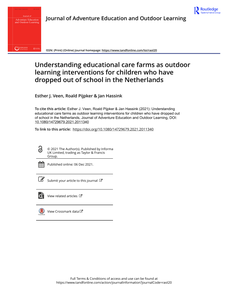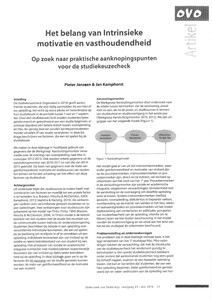Physical inactivity has become a major public health concern and, consequently, the awareness of striving for a healthy lifestyle has increased. As a result, the popularity of recreational sports, such as running, has increased. Running is known for its low threshold to start and its attractiveness for a heterogeneous group of people. Yet, one can still observe high drop-out rates among (novice) runners. To understand the reasons for drop-out as perceived by runners, we investigate potential reasons to quit running among short distance runners (5 km and 10 km) (n = 898). Data used in this study were drawn from the standardized online Eindhoven Running Survey 2016 (ERS16). Binary logistic regressions were used to investigate the relation between reasons to quit running and different variables like socio-demographic variables, running habits and attitudes, interests, and opinions (AIOs) on running. Our results indicate that, not only people of different gender and age show significant differences in perceived reasons to quit running, also running habits, (e.g., running context and frequency) and AIOs are related to perceived reasons to quit running too. With insights into these related variables, potential drop-out reasons could help health professionals in understanding and lowering drop-out rates among recreational runners
DOCUMENT

Are you looking for some tips to stay focused on your studies, now that education has gone online? Have a read through the tips below from the Study Success research group. These tips have been compiled on the basis of scientific insight from cognitive psychology, neuropsychology and educational science, as well as our own studies into motivation, stress, enthusiasm and drop-out.
DOCUMENT

No summary available
DOCUMENT
The main goal of the ATLAS project (2003-2006)is to avoid drop out of people with disabilities from the labour market caused by lack of social competences.
DOCUMENT
When children drop out of school, either temporarily or permanently, this poses a significant problem for both children and society. In the Netherlands, care farms offering care-education programs for school dropouts are emerging. While there is evidence for their effectiveness, models explaining how such outdoor interventions may facilitate positive developments of children and their return to school are lacking. Using the generic Context-Intervention-Mechanisms-Outcome Model as an overarching deductive frame, this study inductively examines how care-educational programs facilitate the positive development of children who have dropped out of school.
DOCUMENT

Abstract: Background Non-compliance to, or drop-out from treatment for childhood ADHD, result in suboptimal outcome. Non-compliance and drop-out may be due to mismatches between patients’ care needs and treatments provided. This study investigated unmet care needs in ADHD patients. Unmet needs were assessed in two different treatment settings (general outpatient setting versus youth-ACT). Youth-ACT treatment is an intensive outreach-oriented treatment for patients with severe psychiatric and psychosocial problems. Comparison of a general outpatient sample with a youth-ACT sample enabled us to assess the influence of severity of psychiatric and psychosocial problems on perceived care needs. Methods Self-reported unmet care needs were assessed among 105 ADHD patients between 6 and 17 years of age in a general outpatient (n = 52) and a youth-ACT setting (n = 53).
DOCUMENT

Om adequaat te kunnen opleiden voor een diensten- of kenniseconomie zal het hoger beroepsonderwijs een nieuw perspectief moeten ontwikkelen. Niet langer zal het zich moeten definiëren als de aanbieder van welomschreven beroepsopleidingen maar als een dienstverlenende instelling gericht op de beroepsvorming van individuen. Binnen het hoger beroepsonderwijs heeft het hoger technische en natuurwetenschappelijke onderwijs deze uitdaging - overigens noodgedwongen vanwege een sterk teruglopende instroom - al opgepakt. Zo is de afgelopen jaren binnen het HTNO op uitnodiging van Axis een aantal herontwerpprojecten van start gegaan. De ervaringen van deze projecten wijzen uit dat investeringen in herontwerp (en dan met name in het vergroten van de keuzemogelijkheden van de studenten en in het omkeren van de leercyclus door concrete praktijkproblemen te laten voorafgaan aan de theorie) lonen: er is, weliswaarnog op kleine schaal, sprake van een stijgende instroom en een vermindering van de drop out. Ook bezoeken nieuwe doelgroepen techniek. Instellingen willen het traditionele, industriële onderwijsmodel verlaten ten gunste van een nieuw paradigma waarin de beroepsvorming centraal staat. Dit betekent niet dat ze het gemakkelijk vinden de omslag te maken. Vooral het investeren n loopbaanbegeleiding en in forward mapping is nog een brug te ver.
DOCUMENT

This systematic literature review describes what is known about the effectiveness of practices in probation supervision. Effectiveness is defined as: contributing to a reduction in recidivism, better functioning of clients in various areas, or prevention of non-compliance and drop-out. Based on a systematic research of Dutch and foreign literature, 141 articles and reports were selected and analysed
DOCUMENT

The check on study choice ('studiekeuzecheck', introduced in 2014) provides enrolling students the possibility to receive extra advice and reconsidering their choice between 1st of May and 1st of September. The studiekeuzecheck is supposed to improve students' information and motivation levels at the start of their study in higher vocational education, implying a better match with secondary education. A a result, student should drop out and switch less. In this article, the factors playing a role in the study choice.
DOCUMENT

Before the start and during the first weeks of their first year, it has been observed by teachers that engineering students start with a high level of motivation, which often seems to decrease during the course of the first semesters. Such a decrease in motivation can be a main driver for students dropping out of University early. A qualitative research will be carried out to answer the main questions that have been raised within the engineering department of the Fontys University of Applied sciences: to what extent does a decrease in the motivation of first-year students exists, exactly when during the course of the first year does this decrease occur and what are the underlying reasons causing this decline in motivation? Gaining more insight in the motivation drop of students could result in modifications to the curriculum. The final objectives are reducing the dropout level of students in the first year and increasing the quality level of young propaedeutics. In [1] and [2] studies are carried out to measure student’s motivation constructs, which have been carried out for first year Engineering students. The authors describe a certain level of motivation drop for first year students at an Engineering University. In Geraedts 2010 [3] it is defined that Maslow rules for students can be seen as an element of a student’s perception onto his or hers education. Often it can be observed that in most cases undergraduates start their education as an unconscious insufficient competent student having a very limited view on the work arena and complexity of the engineering discipline. Quickly after the start of the education year this view develops into a more defined perception of what the content and complexity of the future work field is and what is expected of the student during his or hers education. It is hypothesised that this gain in insights of the student into the work field and the related expectations is a significant contributor to the decline of intrinsic motivation. In this paper the investigated hypothesis and possible other aspects that influence the motivation of students will be presented. Based on results, potential corrective and preventive measures will be defined and discussed. Corrective and predictive measures depend on the results of this study and could be aimed for instance at: 1) making adjustments to the content and/or structure of the first semester curriculum, 2) improving the support of students in making adaptations into a better learning strategy and 3) improve the information on-which students decide to start a mechanical engineering education. This paper will focus on the first year mechanical engineering students of the Fontys University of Applied Sciences. About 100 first year students will be questioned using predefined questionnaires and additionally 20 of them will be interviewed for validation. References [1] Brett D. Jones, Marie C. Paretti, Serge F. Hein, Tamarra W. Knott, An analysis of Motivation Constructs with first-Year Engineering students, Journal of Engineering Education; Oct 2010; 99, 4; Research Library pg. 319 [2] L. Benson, A Kirn, B. Morkos, CAREER: Student Motivation and Learning in Engineering, 120th ASEE annual conference & Exposition June 2013 [3] HGM Geraedts (2010) Innovative learning for innovation ISBN 978-90-5284-624-8 4751
DOCUMENT
